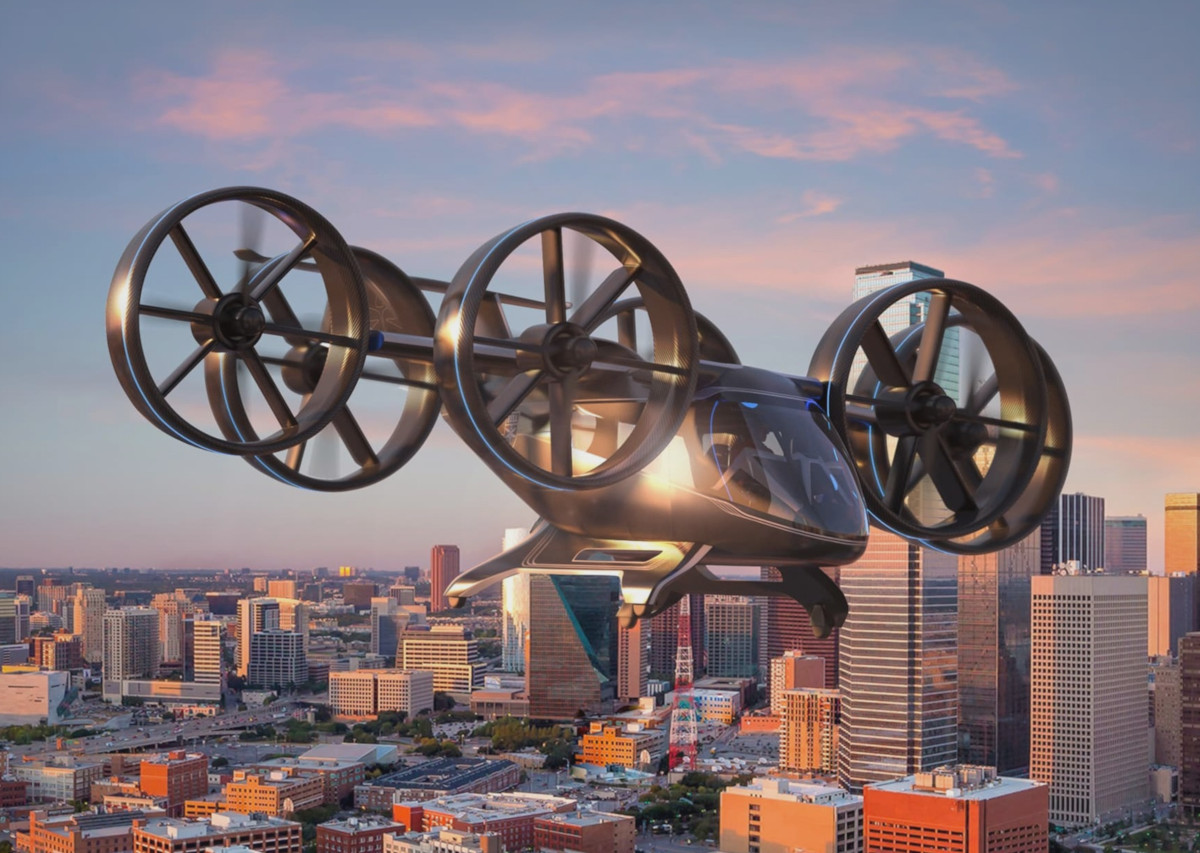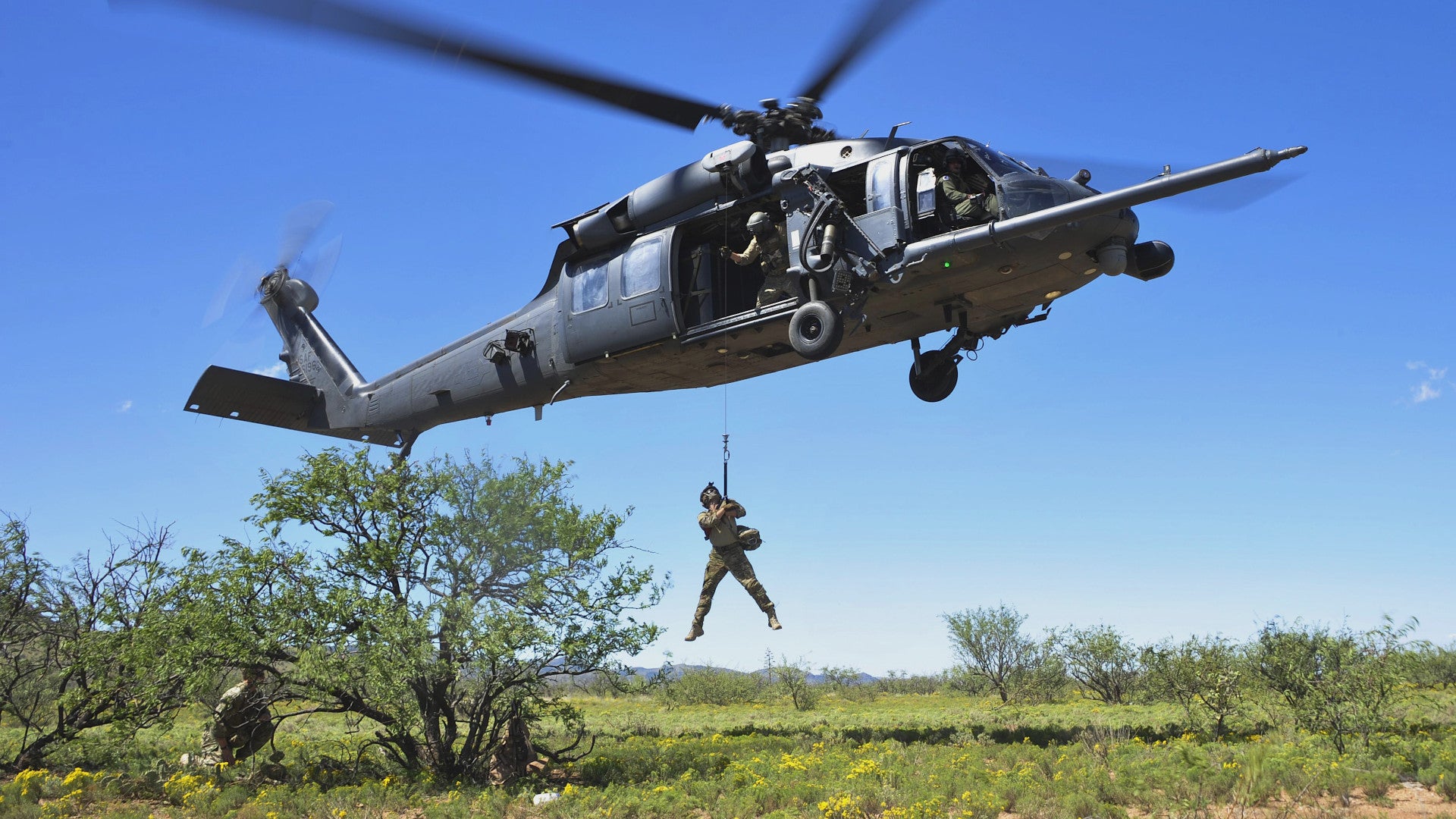In the midst of a future conflict, an American fighter jet is shot down while operating over hostile territory. The terrain is too complicated and risks are too great to send in a traditional combat search and rescue team, so U.S. commanders turn to a novel option: air-drop a small, ultra-quiet autonomous air vehicle with short or vertical take-off and landing capabilities near the crash site so the downed aviator can fly to safety.
Though it may sound like a scene straight out of a sci-fi war movie set in the near future, this is a concept the U.S. Air Force wants to actively explore. The Air Force Research Laboratory first posted the request for proposals for what they blandly described as a “Personnel Recovery / Transport Vehicle” on the U.S. military’s Small Business Innovation Research (SBIR) program website on May 2, 2019.
“In supporting the 2018 National Defense Strategy there is a need to deploy, survive, operate, maneuver, and regenerate in all domains while under attack in theaters throughout the globe,” the notice says. “Diverse environments will require operations from new isolated locations, at greater distances, requiring low cost solutions for increasing our options for providing transport of small teams of personnel into and out of harm’s way without increasing the number of personnel at risk (the aircrew) needed to move these teams.”
AFRL didn’t specify what type of configuration this new unmanned aircraft should have, such as a traditional helicopter or tilt-rotor design, but there is “significant private sector investment that could be leveraged for this military mission is the personal air vehicle (PAV) and urban air mobility (UAM) efforts,” the contracting notice notes. “These efforts have been focused on urban operations for on-demand civilian transport and have many parallel design requirements to that desired under this SBIR but with some modifications to meet the military mission.”

The urban air mobility sector, focused heavily on air taxi and bus concepts, as well as work on the development of practical personal air vehicles, or “flying cars,” has exploded in recent years in the United States and elsewhere around the world. These include, but are hardly limited to, Bell’s Nexus and Boeing’s NeXt concepts. Bell is already working in cooperation with rideshare firm Uber on potential air taxi services, while Boeing’s Aurora Flight Sciences subsidiary has been supporting NeXt’s initial phases with the development of a Passenger Air Vehicle. These are the sorts of developments that AFRL says it hoping to leverage in the design of a future autonomous rescue platform.
The actual stated requirements for the Air Force’s notional air-droppable rescue transport are relatively spartan. The objective goal is for an aircraft that can accommodate four full-equipped personnel for a combined payload weight of 1,400 pounds, but the minimum requirement is two people, including one potentially on a stretcher.
The aircraft needs to have a 100-nautical mile combat radius while cruising at speeds of no less than 100 knots, or more than 115 miles per hour, while carrying that full payload. AFRL wants it to have a 30-minute fuel reserve, too, in case of a need to divert to a different location or otherwise respond to new objectives. It also needs to be able to operate in hot-and-high conditions, defined as an altitude of at least 4,000 feet and a temperature of at least 95 degrees Fahrenheit. Beyond that, the aircraft has to operate from a landing zone as small as 2,500 square feet, which could be in “desert, jungle, mountainous, and maritime (ship to shore transport)” environments. “Water recovery of personnel is a desired capability but not a requirement,” AFRL’s notice adds.
The video below shows Aurora Flight Sciences Passenger Air Vehicle, an autonomous platform that the company says could be suitable for use as an air taxi or as a personal air vehicle, and that could potentially serve as a starting place for the AFRL’s requirements.

The aircraft also has to be quiet, specifically to reduce the probability of detection. This is another place where commercial developments could play a role, since companies working on urban air mobility concepts are well aware that the prospect of greatly increased noise from more routine air traffic in cities could lead to public opposition to their plans. The Air Force has no other stated requirements for features that could reduce the small transport’s radar or infrared signatures.
There is no specific provision for a pilot since “the personnel recovery / transport vehicle envisioned is highly autonomous,” according to the contracting notice. The plan is for it to fly “either remotely through secure datalink similar to unmanned aircraft systems/remotely piloted aircraft in use by Air Force and Department of Defense (DoD), or through minimal control inputs by the person onboard and not requiring significant training.”
The U.S. military as a whole is also investing significant resources into the development of autonomous aircraft and many of these efforts could be applicable to this kind of small personnel transport. The U.S. Army, in particular, is working with the Defense Advanced Research Projects Agency on an artificial intelligence-enabled system to serve as a virtual co-pilot for helicopter crews, which could also be a stepping stone to pilot-optional operation. You can read more about the Aircrew Labor In-Cockpit Automation System (ALIAS) program here. The U.S. Navy and Marine Corps have been working in a similar direction with their Autonomous Aerial Cargo/Utility System (AACUS) effort.

But there could also be drawbacks to the Air Force’s plans. During combat search and rescue operations, as well as other casualty evacuation and personnel recovery missions, the individuals in need of extraction are often injured, potentially too seriously to make their way to a rescue aircraft, autonomous or not. With the aircraft handling the flying, any additional personnel on board could conceivably focus more on tending to any seriously wounded individuals. There is no guarantee that they will be in a place where the unmanned aircraft can set down or where an airdrop would be practical, or that they would be able to readily get to an appropriate location due to injuries or hostile activity in the area.
The Air Force does note that the autonomous feature also means that personnel could conceivably bring the vehicle to a forward staging site and then launch it to the desired location, rather than having to airdrop it directly individuals in need. The Air Force is interested in a design small enough to fit inside a C-130 Hercules transport plane or for a CH-47 Chinook helicopter to carry slung underneath. If a CV-22 Osprey tilt-rotor can carry it in some fashion, that would be great, too, according to the notice. But depending on the operational environment, deploying the unmanned aircraft from a forward location could carry many of the same risks and limitations as employing a manned platform, though it would reduce the danger to aircraft.
This isn’t the first time the U.S. military has looked into ways for downed pilots, or other individuals on the round needing immediate extraction, a means to fly themselves to safety rather, either. In the 1950s and 1960s, the U.S. Marines looked into both small single-person helicopters and ultra-light fixed-wing planes you could inflate like a balloon as potential alternatives to traditional helicopters. None of these proved to be practical.

But more recently, the U.S. Army experimented with a small tandem-rotor drone helicopter, resembling a miniature CH-47, as an alternative to using real Chinooks or UH-60 Black Hawks for casualty evacuation in certain circumstances. There are a number of projects in the works for small autonomous unmanned aircraft to deliver supplies to the front lines that might also be adaptable to casualty evacuation and personnel recovery missions.
DARPA and the Marines had been working with Lockheed Martin and Piasecki Aircraft on one such effort, known as the Aerial Reconfigurable Embedded System (ARES), but they canceled that project just days ago due to rising costs. AFRL’s newly proposed concept could potentially be adaptable in the other direction to take on logistics missions or other roles.

Perhaps the biggest question that remains about the Air Force’s proposed autonomous rescue platform, especially the final design is derived commercial air taxi concepts, will be how is it supposed to survive in an environment already threatening enough to bring down a military aircraft? There are already serious concerns about how the U.S. plans to respond in the future if a fifth-generation stealth fighter, such as the F-35 Joint Strike Fighter, gets shot down, in general. These stealthy planes will be regularly operating in areas that are, by definition, too dangerous for non-stealthy aircraft to go. A stealth transport of some kind might be necessary to safely air-drop this new system in a high-risk scenario.
But, regardless, as AFRL noted in its announcement, future conflicts will increasingly demand additional tools to conduct combat search and rescue, casualty evacuation, and personnel recovery missions. This will be especially true of high-end conflicts where personnel in need of rescue may find themselves inside the umbrella of a hostile integrated air defense network that all but precludes the employment of traditional rescue platforms.
So, depending on the circumstances, American pilots unlucky enough to get shot down in the future may find themselves calling for friendly forces to just drop them another small aircraft so they can fly back to safety.
Contact the author: jtrevithickpr@gmail.com
